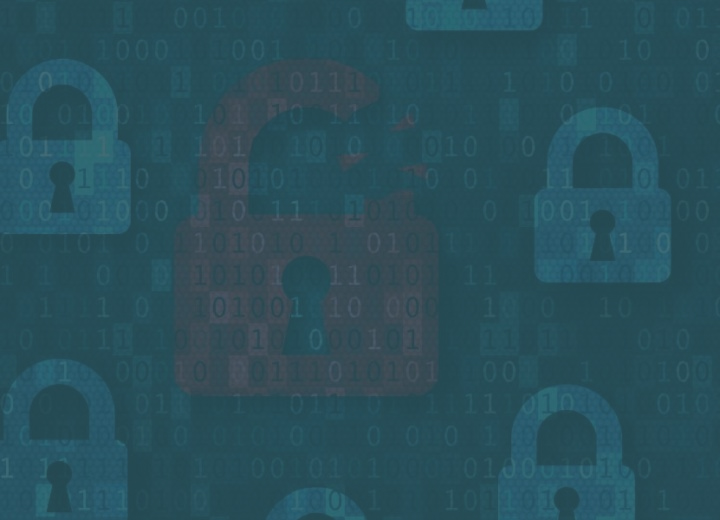
About the Threats
A Russian-backed APT group used an updated version of Industroyer, dubbed Industroyer2, to penetrate a Ukrainian energy company in a failed effort to knock the Kyiv electric grid offline. The cyberattack, executed on April 8, 2022, was detected and stopped.
The following week, on April 13, 2022, The Department of Energy (DOE), the Cybersecurity and Infrastructure Security Agency (CISA), the National Security Agency (NSA), and the Federal Bureau of Investigation (FBI) released a joint Cybersecurity Advisory (CSA) to warn that Advanced Persistent Threat (APT) actors have exhibited the capability to gain full system access to multiple Industrial Control System (ICS) and Supervisory Control and Data Acquisition (SCADA) devices, using a new malware toolkit, Pipedream. The malware toolkit has not yet been used to disrupt or damage any networks or devices.
Difenda cybersecurity experts are actively monitoring these developments, 24×7×365, to ensure that Difenda Shield users are protected against any cyberthreats that may spill over from Russia’s invasion of Ukraine.
Technical threat overview: Industroyer2
- According to ESET, which collaborated with CERT-UA to analyze the attack, the state-sponsored Russian APT group Sandworm attempted to damage the Kyiv electric grid on April 8th, 2022, through an unnamed energy company. ESET states that they have high confidence that Sandworm launched the attack.
- Sandworm deployed Industroyer2, an updated version of the ICS malware that Sandworm previously used to successfully attack Ukraine in 2016. The first attack shut down power to roughly 20 percent of Kyiv for over an hour.
- Based on PE timestamps, Sandworm had been planning the Industroyer2 attack for at least two weeks prior to launching it.
- Sandworm successfully breached the energy company, and the attack targeted high-voltage electrical substations. However, the attack was detected and stopped before it damaged any equipment or disrupted operations.
- Sandworm also used several other malware families in addition to Industroyer2 in the recent attack. Those include, ORCSHRED, SOLOSHRED, AWFULSHRED, and a variant of CaddyWiper. CaddyWiper was previously used in March 2022 against a Ukrainian bank.
- The attack also included regular disk wipers for Windows, Linux, and Solaris operating systems.
- At this time, it is not known how attackers compromised the initial victim. It is also not known how the malware spread from the IT network to the ICS network.
Technical threat overview: Pipedream
- The DOE, CISA, NSA, and the FBI released a joint CSA on April 13, 2022 to warn that APT actors have developed custom-made tools for targeting ICS/SCADA devices. The tools enable them to scan for, compromise, and control affected devices once they have established initial access to the Operational Technology (OT) network.
- The custom malware toolkit, which is being referred to by some researchers as “Pipedream, has been called a “Swiss Army knife of ICS/SCADA malware due to the large number of features in the malware package and its ability to target many different types of networks.
- While APT actors are nearly always state-sponsored cut-outs, the CSA did not specify which group nor which country developed the malware. However, the CSA follows other warnings from the Biden Administration about Russia’s intention to launch more cyberattacks against Ukraine’s critical infrastructure.
- Security researchers at Dragos believe that an APT group called Chernovite is responsible for developing Pipedream. At this time, we cannot confirm this, and Dragos does not claim to have high confidence in this attribution.
- The systems and devices these APT actors have shown the ability to compromise include Schneider Electric programmable logic controllers (PLCs), OMRON Sysmac NEX PLCs, and Open Platform Communications Unified Architecture (OPC UA) servers, among others.
- Pipedream has a modular architecture, and it scans for, compromises, and then takes control of compromised devices once the devices have established initial access to the OT network.
- Additionally, Pipedream gives APT actors the ability to compromise Windows-based engineering workstations, which may be present in both IT and OT environments. This capability relies on an exploit that compromises an ASRock motherboard driver with known vulnerabilities. By compromising and maintaining full system access to ICS/SCADA devices, APT actors could elevate privileges, move laterally within an OT environment, and disrupt critical devices or functions.
- Pipedream gives hackers to ability to conduct highly automated exploits against targeted devices. The tools have a virtual console with a command interface that mirrors the interface of the targeted ICS/SCADA device. Modules interact with targeted devices, enabling operations by lower-skilled cyber actors to emulate higher-skilled actor capabilities.
- The APT actors can leverage the modules to scan for targeted devices, conduct reconnaissance on device details, upload malicious configuration/code to the targeted device, back up or restore device contents, and modify device parameters.
What we are seeing:
As of today, we have not observed Industroyer2 used in attacks beyond the targeted one against Kyiv’s electric grid discussed above. Furthermore, Pipedream does not appear to have been used for destructive or disruptive purposes yet, and the agencies that detected it have not revealed how they did so or where they found the malware toolkit.
Difenda security experts continue to monitor a number of state-sponsored APT groups, and our team continues to actively hunt for new malware variations created by these threat actors. Refer to our recent threat advisory about Russian cyberwarfare operations against Ukraine for a partial list of APT groups we are continuously monitoring.
What we Recommend:
CISA recommends and Difenda experts strongly agree that organizations with ICS/SCADA devices and OT networks should implement a number of proactive mitigations and adopt certain security best practices in order to protect against current and future attacks against critical infrastructure. These and other mitigations and best practices we recommend include:
- Air gap ICS/SCADA systems and networks from corporate and internet networks or isolate them using strong perimeter controls.
- Limit any communications entering or leaving ICS/SCADA perimeters.
- Enforce multi-factor authentication for all remote access to ICS networks and devices whenever possible.
- Set up network segmentation in your firewalls to separate sensitive applications from other parts of the network.
- Develop a cyber incident response plan, and exercise it regularly with stakeholders in IT, cybersecurity, and operations.
- Change all passwords to ICS/SCADA devices and systems on a consistent schedule, especially all default passwords, to device-unique strong passwords to mitigate password brute force attacks and to give defender monitoring systems opportunities to detect common attacks.
- Maintain known-good offline backups for faster recovery upon a disruptive attack, and be sure to conduct hashing and integrity checks on firmware and controller configuration files to ensure validity of those backups.
- Limit ICS/SCADA systems’ network connections to only specifically allowed management and engineering workstations.
- Protect management systems by configuring Device Guard, Credential Guard, and Hypervisor Code Integrity (HVCI). Install Endpoint Detection and Response (EDR) solutions on these subnets and ensure strong anti-virus file reputation settings are configured.
- Implement robust log collection and retention from ICS/SCADA systems and management subnets.
- Leverage a continuous OT monitoring solution to alert on malicious indicators and behaviors, watching internal systems and communications for known hostile actions and lateral movement. For enhanced network visibility to potentially identify abnormal traffic, CISA provides open-source Industrial Control Systems Network Protocol Parsers (ICSNPP).
- Ensure all applications are only installed when necessary for operations and delete applications that your organization no longer uses.
- Enforce the principle of least privilege. Only use admin accounts when required for specific tasks, such as installing software updates.
- Investigate symptoms of a denial of service or connection severing, which exhibit as delays in communications processing, loss of function requiring a reboot, and delayed actions to operator comments as signs of potential malicious activity.
- Monitor systems for loading of unusual drivers, especially for ASRock driver if no ASRock driver is normally used on the system.
Threat actor hunting: from IT to OT and back:
On Tuesday, May 3, 2022, you have a chance to ask two security experts about other actions your organization should take to protect against these threats. Difenda is hosting a webinar with Richard Diver, Microsoft’s Sr. Technical Business Development Manager. Diver and Difenda’s Director of Research and Response, Sheldon Shaw, will discuss lab research and outline an attack-driven approach to identify threat hunt criteria from IT to OT and beyond.
Plus, they will demonstrate a real-time simulated attack with OT malware. Register today for your spot!
What Difenda is doing:
Difenda continues to maintain a presence on the Dark Web to monitor for new and emergent threats and will provide updates through the Technical Account Managers that are assigned to clients.
About Difenda
Difenda is a privately held SecOps-as-a-Service company founded in 2008. It delivers 24/7/365 security operations backed by modernized PCI, SOC 2 Type II, and ISO 27001 certified Cyber Command Centers (C3). Difenda’s managed practice is powered solely on the Microsoft Security product platform, and it holds the Gold Security Service Provider certification and an Advanced Specialization in Threat Protection with Microsoft. Alongside a fully integrated, modular platform, it provides a range of advisory and offensive security services to complement customer driven outcomes.




